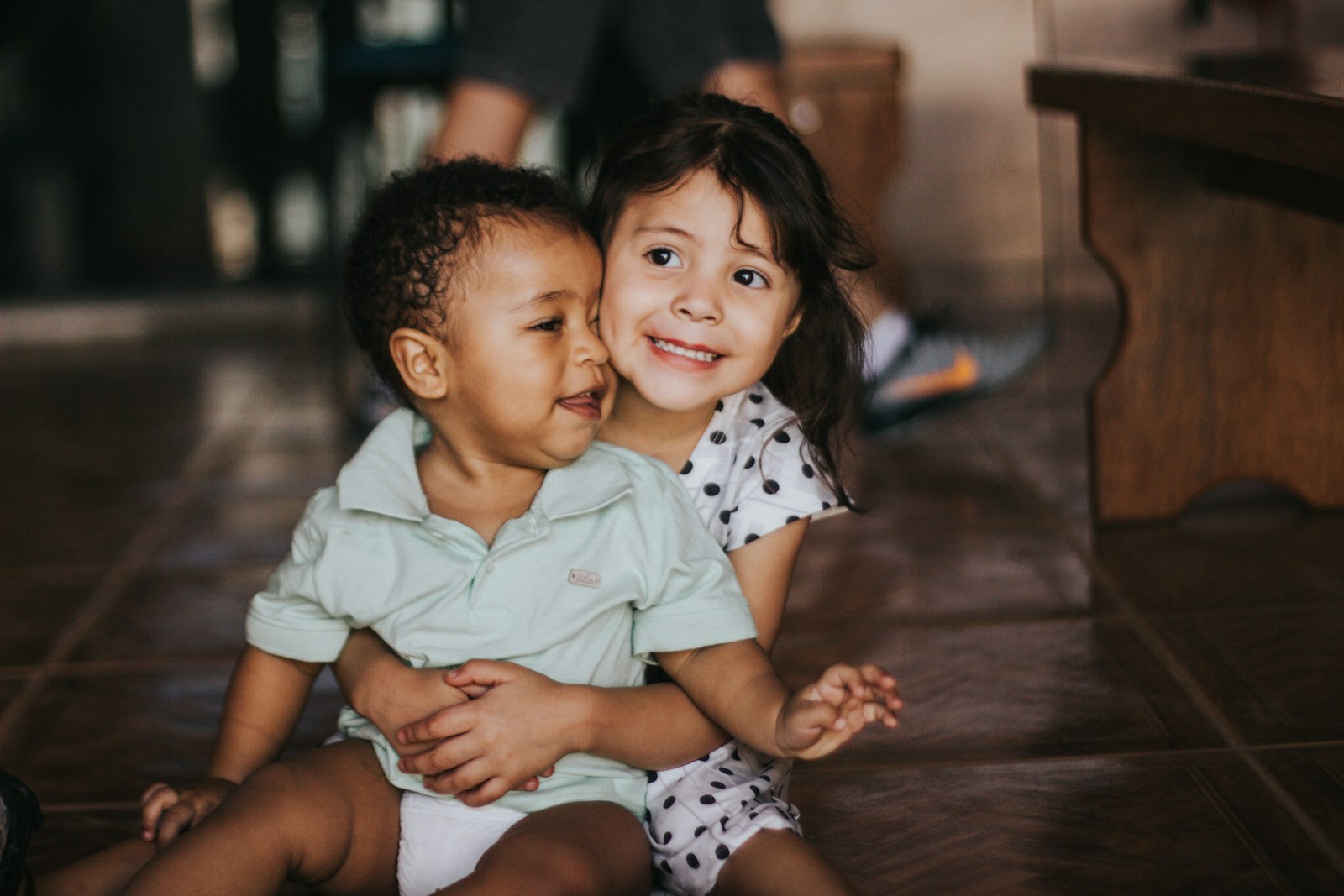The arrival of a new sibling can be both exciting and challenging for your child. While the birth of a sibling is a joyous occasion, it can also bring about significant changes in the family dynamic, which may lead to feelings of jealousy, confusion, or insecurity for the older child. Helping your child adjust to a new sibling requires preparation, understanding, and patience to ensure a smooth transition.
This article provides practical tips and strategies to help you support your child through this life-changing event, fostering positive emotions and a healthy relationship with their new sibling.
1. Prepare Your Child in Advance
One of the most important things you can do to help your child adjust to a new sibling is to prepare them in advance for the changes that will occur. Giving your child time to get used to the idea of a new baby can help reduce feelings of shock or confusion when the baby arrives.
Ways to Prepare:
- Talk about the baby early on: As soon as you feel comfortable, start talking to your child about the pregnancy and what it means to have a sibling. Use age-appropriate language to explain that a new baby will be joining the family and what changes may come.
- Read books about siblings: Reading children’s books about becoming a big brother or sister can help your child understand what to expect and develop positive feelings about the new baby. Books like “The New Baby” by Mercer Mayer or “I’m a Big Sister” by Joanna Cole can be helpful.
- Explain what babies are like: Prepare your child for the realities of life with a newborn, such as crying, frequent feedings, and naps. Let them know that babies require a lot of attention, but that doesn’t mean they will be less important.
Why It’s Important: Preparing your child for the baby’s arrival helps them feel included and gives them time to adjust emotionally to the upcoming changes in family dynamics.
2. Involve Your Child in the Baby’s Arrival
Involving your child in the preparations for the new baby helps foster a sense of ownership and inclusion in this exciting family event. Letting them take part in preparing for the baby’s arrival makes them feel valued and gives them an active role in welcoming their new sibling.
Ways to Involve Your Child:
- Let them help set up the nursery: Depending on their age, ask your child to help with simple tasks like picking out baby clothes, arranging toys, or helping set up the baby’s room.
- Let them choose a gift for the baby: Encourage your child to pick out a small gift for their new sibling. This helps build a connection before the baby is born.
- Let them attend doctor visits: If appropriate, take your child along to some of your prenatal appointments, such as ultrasounds. This can make the baby feel more real to them.
Why It’s Important: Involving your child in the preparation process makes them feel like they are an important part of the family’s growth, which helps reduce feelings of exclusion or jealousy.
3. Validate Their Feelings
The arrival of a new sibling may trigger a wide range of emotions in your child, from excitement to jealousy and fear of being replaced. It’s important to acknowledge and validate their feelings while providing reassurance.
How to Validate Feelings:
- Listen without judgment: If your child expresses negative emotions, like jealousy or sadness, listen calmly and acknowledge their feelings without dismissing them. For example, you could say, “It sounds like you’re feeling sad because the baby gets a lot of attention. It’s okay to feel that way.”
- Encourage open communication: Let your child know that they can come to you with any feelings or concerns. This open line of communication helps them feel safe in expressing their emotions.
- Provide reassurance: Reassure your child that your love for them hasn’t changed and that they will always be an important part of the family.
Why It’s Important: Validating your child’s feelings and offering reassurance helps them feel understood and supported, making it easier for them to adjust to the new sibling without feeling neglected.
4. Maintain Routines and One-on-One Time
The arrival of a new baby can disrupt the usual routines that your child has come to rely on. To help your child feel secure and maintain a sense of normalcy, it’s important to keep their daily routines as consistent as possible.
Tips for Maintaining Routine:
- Stick to regular schedules: Try to keep your child’s regular routine in place, such as mealtime, bedtime, and activities, even after the baby arrives.
- Make time for one-on-one attention: Ensure that you spend dedicated time with your child each day, even if it’s just for a short while. This could be reading a book together, playing a game, or going for a walk.
- Involve other caregivers: If your attention is focused on the baby, ensure that another caregiver (such as a partner, grandparent, or relative) spends quality time with your child to ensure they still feel special and included.
Why It’s Important: Consistent routines and one-on-one attention help children feel grounded and prevent feelings of being left out, even when the new baby demands a lot of attention.
5. Introduce the Baby in a Positive Way
When it’s time for your child to meet their new sibling for the first time, try to create a positive and calm atmosphere. First impressions can make a big difference in how your child views the new baby, so you’ll want to ensure that their introduction is a happy and memorable event.
Introducing the Baby:
- Let your child be the first to meet the baby: If possible, allow your older child to meet the baby before introducing the newborn to other family members or friends. This gives them a special moment with their new sibling.
- Make it fun: Consider having a small “gift exchange,” where the baby “gives” your child a small present. This can make the meeting feel like a celebration.
- Be patient: If your child is initially hesitant or unsure about the baby, don’t force interaction. Allow them to approach the baby at their own pace.
Why It’s Important: A positive first meeting sets the tone for the sibling relationship and helps your child feel more comfortable and excited about having a new sibling.
6. Encourage Involvement in Caring for the Baby
Getting your child involved in caring for the baby can help them feel proud of their new role as an older sibling. Depending on your child’s age, there are many small tasks they can help with that will foster a sense of responsibility and inclusion.
Ways to Involve Your Child:
- Help with simple tasks: Ask your child to help with age-appropriate tasks, such as handing you a diaper, choosing the baby’s outfit for the day, or helping to sing lullabies to soothe the baby.
- Praise their contributions: Give your child plenty of praise and encouragement for their efforts. Saying things like, “You’re such a great helper!” or “The baby loves when you sing to them,” helps them feel valued and appreciated.
- Let them have a special role: If possible, assign your child a special role, such as being the “diaper assistant” or “storytime captain,” so they feel they have an important part to play.
Why It’s Important: Involving your child in caring for the baby gives them a sense of ownership in the sibling relationship and helps build positive connections with their new sibling.
7. Encourage Bonding Through Play and Interaction
While newborns can’t engage in play in the same way as older children, you can still find opportunities to encourage bonding between your child and their new sibling. As the baby grows, playful interactions will naturally develop, but you can help foster those early bonds by guiding your child in gentle play and interaction.
Encouraging Play:
- Gentle interaction: Encourage your child to interact with the baby through gentle touch, talking to the baby, or showing them toys. This helps your child feel connected and allows them to develop an early bond with their sibling.
- Read or sing together: Have your child read books to the baby or sing lullabies. Even if the baby is too young to understand, this shared time can foster closeness and help your child feel proud of their role.
- Celebrate milestones together: As the baby grows and reaches developmental milestones, include your child in the celebration. For example, if the baby starts smiling or rolling over, point out to your older child how exciting it is that they get to witness these special moments.
Why It’s Important: Encouraging early bonding through positive interactions helps your child feel more connected to the baby and strengthens the sibling relationship over time.
8. Be Patient with Regression or Changes in Behavior
It’s common for children to experience regression or changes in behavior after the arrival of a new sibling. Your child may start acting out, seeking more attention, or even reverting to behaviors like thumb-sucking or bedwetting that they had previously outgrown. These behaviors are a normal reaction to feeling uncertain or insecure about their new role in the family.
How to Handle Regression:
- Be patient and understanding: Try not to get frustrated if your child starts displaying regressive behaviors. Instead, recognize that this is their way of coping with the changes and reassure them that you still love and value them.
- Offer extra attention: Your child may be seeking more attention because they feel insecure. Offering extra cuddles, praise, or one-on-one time can help them feel reassured and reduce the need for regressive behaviors.
- Gently encourage progress: While it’s important to be patient, you can also gently encourage your child to continue making progress. For example, if they start wanting to use a pacifier again, offer comfort but also remind them of how proud you are of their big-kid skills.
Why It’s Important: Patience and understanding during periods of regression help your child feel supported and secure as they navigate their new role as an older sibling.
9. Address Feelings of Jealousy with Empathy
Jealousy is a natural emotion that may arise when a new sibling joins the family. It’s important to acknowledge and address these feelings, as ignoring them could lead to resentment between siblings. Instead of dismissing your child’s jealousy, show empathy and work together to address their concerns.
How to Address Jealousy:
- Acknowledge their feelings: If your child expresses jealousy, let them know it’s okay to feel that way. For example, you could say, “It’s normal to feel upset when a new baby gets a lot of attention. I understand how you feel.”
- Explain the baby’s needs: Gently explain that babies require a lot of attention because they can’t do things for themselves yet. Let your child know that as the baby grows, they will be able to do more fun things together.
- Reassure them of your love: Reiterate that your love for them hasn’t changed and that they are just as important as they were before the baby was born.
Why It’s Important: Acknowledging and addressing feelings of jealousy helps your child feel understood and reassured, reducing the likelihood of long-term resentment toward their sibling.
10. Create Special Big Sibling Moments
Making your child feel special and celebrating their new role as an older sibling can help them embrace the changes in the family. Creating special big sibling moments helps your child feel proud and appreciated, reinforcing their new identity within the family.
How to Create Big Sibling Moments:
- Give them a “big sibling” gift: Consider giving your child a small gift to mark the occasion of becoming a big brother or sister. This could be something like a special toy, a t-shirt that says “Big Brother” or “Big Sister,” or a badge of honor for their new role.
- Have a sibling celebration: Plan a small celebration in honor of your child becoming a big sibling. This could be as simple as having a special family dinner where you focus on their new role.
- Share stories about when they were a baby: Remind your child of how special they were when they were a baby, too, and how much attention they received. This helps them understand that all babies need care, but that the love in your family has only grown.
Why It’s Important: Celebrating your child’s new role as a big sibling helps them feel proud of their responsibilities and reduces feelings of jealousy or insecurity.
11. Model Positive Sibling Relationships
Children often learn how to interact with their siblings by watching how their parents interact with them and with each other. Modeling positive sibling relationships helps set the foundation for a healthy bond between your children.
Ways to Model Positive Relationships:
- Show love and respect between family members: Demonstrate love, kindness, and respect between all family members to encourage a positive atmosphere in the home.
- Encourage cooperation and teamwork: Show your child how working together as a family can make things easier and more fun. For example, you can ask for their help in caring for the baby while also making sure they see you caring for both of them equally.
- Promote fairness: Avoid showing favoritism or making comparisons between your children, as this can lead to resentment. Instead, focus on celebrating each child’s unique qualities and contributions to the family.
Why It’s Important: Modeling positive relationships and fostering a sense of fairness and cooperation sets the tone for a strong, supportive sibling bond.
12. Explain the Benefits of Having a Sibling
Your child may initially focus on the challenges of having a new sibling, such as sharing attention or toys. Help shift their perspective by explaining the benefits of having a sibling, such as always having a playmate, a friend to grow up with, and someone to share experiences with.
How to Highlight the Benefits:
- Talk about future fun: Explain that as the baby grows, they will be able to do more fun things together, like playing games, going on adventures, and sharing secrets.
- Share your own sibling experiences: If you have siblings, share positive stories from your childhood about fun times with your brothers or sisters. This helps your child see the value of the sibling relationship.
- Focus on the bond: Explain that siblings often have a unique and special bond that can last a lifetime, and that their relationship with the new baby will grow and evolve over time.
Why It’s Important: Helping your child see the positive aspects of having a sibling can foster excitement and anticipation, shifting their focus away from any challenges or feelings of jealousy.
Conclusion: Supporting a Positive Transition to Becoming a Big Sibling
The arrival of a new sibling is a significant life change for any child. By preparing your child in advance, involving them in the baby’s arrival, and maintaining open communication, you can help them adjust to their new role as a big brother or big sister. It’s important to validate their feelings, offer reassurance, and provide opportunities for bonding, while also maintaining their sense of routine and individuality.
As you navigate this transition, remember that patience and understanding are key. Your child may experience a range of emotions, from excitement to jealousy, and it’s important to address these feelings with empathy and support. With the right strategies in place, your child can develop a positive relationship with their new sibling, creating the foundation for a lifelong bond filled with love, cooperation, and shared experiences.




